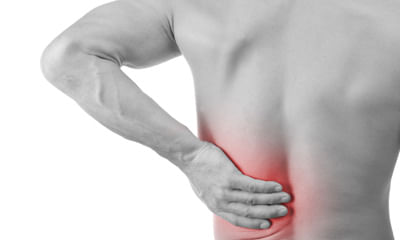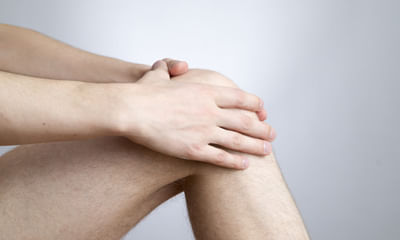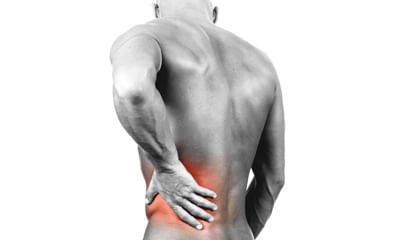Sweaty Hands And Feet Treatment
I am g atta, age 46 weight 67, hight 6" 6'bp normal. I am diabetic but sugar under control. I have foot pain and leg mus ...
Ask Free Question
Greetings from ortho clinic, a diabetic diet in india is similar to a healthy balanced diet recommended for individuals with diabetes worldwide. The key principles of a diabetic diet involve managing carbohydrate intake, incorporating a variety of foods, controlling portion sizes, and promoting regular physical activity. Here are some general guidelines for a diabetic diet in india: 1. Carbohydrate management: - opt for complex carbohydrates such as whole grains (brown rice, whole wheat, millets), legumes, and vegetables. - limit the intake of refined carbohydrates like white rice, white bread, sugary drinks, and sweets. - monitor the quantity of carbohydrates consumed and distribute them evenly throughout the day. 2. Portion control: - control portion sizes to maintain a healthy weight and manage blood sugar levels. - use measuring cups, spoons, or a food scale to accurately measure portions. - include a variety of foods from different food groups to ensure a balanced diet. 3. Emphasize fiber-rich foods: - consume high-fiber foods such as whole grains, fruits, vegetables, legumes, and nuts. - fiber helps regulate blood sugar levels, improves digestion, and provides a feeling of fullness. 4. Healthy fat choices: - choose healthier sources of fats like nuts, seeds, avocados, olive oil, and fatty fish (such as salmon) rich in omega-3 fatty acids. - limit saturated fats found in red meat, full-fat dairy products, and fried foods. 5. Include lean proteins: - include lean protein sources such as skinless chicken, turkey, fish, low-fat dairy products, tofu, and legumes. - protein helps in building and repairing tissues, and it doesn't significantly impact blood sugar levels. 6. Limit added sugars and sugary drinks: - minimize the consumption of sugary foods, desserts, sweets, and beverages. - opt for naturally sweet foods like fruits and limit the intake of fruit juices. 7. Regular physical activity: - engage in regular exercise such as brisk walking, jogging, cycling, or any activity recommended by your healthcare provider. - physical activity helps in improving insulin sensitivity and managing blood sugar levels. It's important to note that these are general guidelines, and it's advisable to work with a registered dietitian or a healthcare professional to create a personalized diabetic diet plan based on your specific needs, preferences, and any other health conditions you may have. They can provide you with detailed guidance and help you make appropriate dietary adjustments. Please contact whats app mobile for free dietary reversal for diabetes.
Hello sir. I am naveen from raipur, dehradun. Sir, since last 4-5 months, I am facing pain in my lower back. I have offi ...
Ask Free Question
Back pain can have causes that aren't due to underlying disease. Examples include overuse such as working out or lifting too much, prolonged sitting and lying down, sleeping in an uncomfortable position or wearing a poorly fitting backpack. Doing exercises to strengthen the lower back can help alleviate and prevent lower back pain. It can also strengthen the core, leg, and arm muscles. Exercise also increases blood flow to the lower back area, which may reduce stiffness and speed up the healing process. Below are exercises that strengthen the lower back and help manage lower back pain: 1. Bridges—lie on the ground and bend the knees, placing the feet flat on the floor hip-width apart. Press the feet into the floor, keeping the arms by the sides. Raise the buttocks off the ground until the body forms a straight line from the shoulders to the knees. Squeeze the buttocks with the shoulders remaining on the floor. Lower the buttocks to the ground and rest for a few seconds.Repeat 15 times and then rest for 1 minute.Do 3 sets of 15 repetitions.2. Knee-to-chest stretches— lie on the back on the floor. Bend the knees, keeping both feet flat on the floor. Use both hands to pull one knee in toward the chest. Hold the knee against the chest for 5 seconds, keeping the abdominals tight and pressing the spine into the floor. Return to the starting position.Repeat with the opposite leg.Repeat with each leg 2–3 times twice a day. 3. Lower back rotational stretches—lie back on the floor with bent knees and feet flat on the ground. Keeping the shoulders firmly on the floor, gently roll both bent knees over to one side. Hold the position for 5–10 seconds. Return to the starting position. Gently roll the bent knees over to the opposite side, hold, and then return to the starting position. Repeat 2–3 times on each side twice a day. 4. Draw-in maneuvers— lie back on the floor with knees bent and feet flat, keeping the arms by the sides. Breathe in deeply. While breathing out, pull the bellybutton toward the spine, tightening the abdominal muscles and keeping the hips still. Hold the position for 5 seconds. Repeat 5 times. 5. Pelvic tilts— lie back on the floor with knees bent and feet flat, keeping the arms by the sides. Gently arch the lower back and push the stomach out. Hold for 5 seconds, then relax. Flatten the back and pull the bellybutton in toward the floor. Hold for 5 seconds, then relax. Increase the number of repetitions daily, building up to 30. 6. Lying lateral leg lifts— lie on one side with the legs together. Keep the lower leg slightly bent. Draw the bellybutton into the spine to engage the core muscles. Raise the top leg about 18 inches, keeping it straight and extended. Hold the position for 2 seconds. Repeat 10 times. Turn onto the other side of the body and repeat, lifting the other leg. Perform 3 sets on each side. 7. Cat stretches— get onto the hands and knees with the knees hip-width apart. Arch the back, pulling the bellybutton up toward the spine. Slowly relax the muscles and allow the abdomen to sag toward the floor. Return to the starting position. Repeat 3–5 times twice a day. 8. Supermans— lie face down on the ground and stretch both arms out in front of the body, keeping the legs stretched out and flat on the ground. Raise both the hands and feet, aiming to create a gap of about 6 inches between them and the floor. Try to pull in the bellybutton, lifting it off the floor to engage the core muscles. Keep the head straight and look at the floor to avoid neck injury. Stretch the hands and feet outward as far as possible. Hold the position for 2 seconds. Return to the starting position. Repeat 10 times. For this homeopathic treatment is very effective consult online with details.
My son is suffering from athletes foot. Please.need help. Would also like to balance the days and the diet accordingly. ...
Ask Free Question
Athlete's foot is a fungal skin infection spread through contact with an infected person, walking barefoot on contaminated surfaces, such as locker rooms, pools, and sharing mats, bed linens, or shoes. Damp socks, shoes, warm climate, wearing tight shoes for long hours aggravate the complaints. The symptoms includes - itching - more after you remove the shoes & socks, scaly rash, redness of skin, burning. The infection can easily spread to groins, other areas of body through own hands after itching. For prevention try wearing sandals as much as you can; if you want to wear shoes have two pairs so that you can change them alternately; change your socks daily; wash your feet twice a day and wipe it dry; use warm soapy water to wash your feet; avoid walking barefoot in public places. You can try antifungal creams from over the counter at pharmacy. If within two weeks the symptoms don't subside please visit a doctor.
I have a pain on my right side for more than 5 years it goes down to my hip joint and a sore angle for 4 years now on th ...
Ask Free Question
U have not mentioned front part of right side or back side? Below are exercises that strengthen the lower back and help manage lower back pain: 1. Bridges—lie on the ground and bend the knees, placing the feet flat on the floor hip-width apart. Press the feet into the floor, keeping the arms by the sides. Raise the buttocks off the ground until the body forms a straight line from the shoulders to the knees. Squeeze the buttocks with the shoulders remaining on the floor. Lower the buttocks to the ground and rest for a few seconds.Repeat 15 times and then rest for 1 minute.Do 3 sets of 15 repetitions.2. Knee-to-chest stretches— lie on the back on the floor. Bend the knees, keeping both feet flat on the floor. Use both hands to pull one knee in toward the chest. Hold the knee against the chest for 5 seconds, keeping the abdominals tight and pressing the spine into the floor. Return to the starting position.Repeat with the opposite leg.Repeat with each leg 2–3 times twice a day. 3. Lower back rotational stretches—lie back on the floor with bent knees and feet flat on the ground. Keeping the shoulders firmly on the floor, gently roll both bent knees over to one side. Hold the position for 5–10 seconds. Return to the starting position. Gently roll the bent knees over to the opposite side, hold, and then return to the starting position. Repeat 2–3 times on each side twice a day. 4. Draw-in maneuvers— lie back on the floor with knees bent and feet flat, keeping the arms by the sides. Breathe in deeply. While breathing out, pull the bellybutton toward the spine, tightening the abdominal muscles and keeping the hips still. Hold the position for 5 seconds. Repeat 5 times. 5. Pelvic tilts— lie back on the floor with knees bent and feet flat, keeping the arms by the sides. Gently arch the lower back and push the stomach out. Hold for 5 seconds, then relax. Flatten the back and pull the bellybutton in toward the floor. Hold for 5 seconds, then relax. Increase the number of repetitions daily, building up to 30. 6. Lying lateral leg lifts— lie on one side with the legs together. Keep the lower leg slightly bent. Draw the bellybutton into the spine to engage the core muscles. Raise the top leg about 18 inches, keeping it straight and extended. Hold the position for 2 seconds. Repeat 10 times. Turn onto the other side of the body and repeat, lifting the other leg. Perform 3 sets on each side. 7. Cat stretches— get onto the hands and knees with the knees hip-width apart. Arch the back, pulling the bellybutton up toward the spine. Slowly relax the muscles and allow the abdomen to sag toward the floor. Return to the starting position. Repeat 3–5 times twice a day. 8. Supermans— lie face down on the ground and stretch both arms out in front of the body, keeping the legs stretched out and flat on the ground. Raise both the hands and feet, aiming to create a gap of about 6 inches between them and the floor. Try to pull in the bellybutton, lifting it off the floor to engage the core muscles. Keep the head straight and look at the floor to avoid neck injury. Stretch the hands and feet outward as far as possible. Hold the position for 2 seconds. Return to the starting position. Repeat 10 times. For this homeopathic treatment is very effective consult online with details.
My mom age 53 female. Having pain in shoulder and near collar bone and also mild swelling in mid upper chest under neck. ...
Ask Free Question
Previous answer: mobility exercises standing arm swings to do this exercise: 1. Stand tall with your arms by your sides. 2. Engage your core and swing your arms forward until they’re as high as you can go. Make sure you don’t raise your shoulders. 3. Return your arms to the starting position and repeat. 4. Do this movement for 30 to 60 seconds. Shoulder pass-through to do this exercise: 1. Stand with your feet shoulder-width apart and your arms in front of your body. 2. Hold a stick, like a broomstick or pvc pipe, with an overhand grip. Your arms will be wider than shoulder-width. Make sure the stick or pipe is parallel to the floor. 3. Engage your core and slowly raise the broomstick or pipe above your head, keeping your arms straight. Only go as far as comfortable. 4. Hold the pose for a few seconds. 5. Return to the starting position. 6. Repeat 5 times. High-to-low rows to do this exercise: 1. Secure a resistance band to a sturdy object above shoulder height. 2. Kneel down on one knee and grab the band with the opposite hand. The other hand can rest at your side. 3. Pull the band toward your body while keeping your torso and arm straight. Focus on squeezing the shoulder blades together. 4. Return to the starting position and repeat. 5. Do 2–3 sets of 10 repetitions on each side. Reverse fly to do this exercise: 1. Hold a dumbbell in each hand. 2. Stand with your feet shoulder-width apart, knees slightly bent. 3. Engage your core and bend forward at the waist. Keep your back straight. Your arms will be extended. 4. Raise your arms away from your body. Focus on squeezing your shoulder blades together. Stop when you get to shoulder height. 5. Slowly return to the starting position and repeat. 6. Do 3 sets of 10 repetitions. Rotation with dumbbell o do this exercise: 1. Stand with your feet shoulder-width apart while holding a light dumbbell in your right hand. 2. Raise your arm so your elbow is at shoulder height. The front of your hand will be facing the ground. 3. Rotate your shoulder to bring your arm and weight up so your hand is raised toward the ceiling. 4. Slowly return to the starting position and repeat before changing sides. 5. Do 2–3 sets of 12 repetitions on each arm. Mobility stretches cross-arm stretch to do this stretch: 1. Stand with your feet slightly less than shoulder-width apart and bring your right arm up to a little less than shoulder height. 2. Place your left hand on your right elbow and gently pull your right arm across your body using the left hand to support your arm. 3. Hold this position for up to 30 seconds. 4. Repeat on the opposite side. 5. Do each side 3–5 times. Sleeper stretch to do this stretch: 1. Lie on the affected side. If you have no injury or pain, choose a side to start with. Your shoulder should be stacked underneath you. 2. Bring your elbow straight out from your shoulder and bend this arm, so your fingers are pointing toward the ceiling. This is the starting position. 3. Gently guide this arm toward the floor using the unaffected arm. Stop when you feel a stretch in the back of your affected shoulder. 4. Hold this position for up to 30 seconds. 5. Do 3 repetitions before changing sides. Doorway stretch to do this stretch: 1. Stand in a doorway with elbows and arms forming a 90-degree angle. Your feet should be in a split stance. 2. Bring your right arm up to shoulder height and place your palm and forearm on the doorway. 3. Gently lean into the stretch, only going as far as comfortable. 4. Hold the stretch for up to 30 seconds. 5. Change sides and repeat. Perform on each side 2–3 times. Chest expansion to do this stretch: 1. Stand tall with your feet together. 2. Hold the end of a towel or exercise band in each hand, with your arms behind your body. 3. Use the towel or band to help move your shoulder blades together and open your chest. This will cause you to look toward the ceiling. 4. Hold this pose for up to 30 seconds. 5. Repeat 3–5 times. Strenghtening exercises 1.pendulum stretch do this exercise first. Relax your shoulders. Stand and lean over slightly, allowing the affected arm to hang down. Swing the arm in a small circle — about a foot in diameter. Perform 10 revolutions in each direction, once a day. As your symptoms improve, increase the diameter of your swing, but never force it. When you're ready for more, increase the stretch by holding a light weight (three to five pounds) in the swinging arm. 2. Towel stretch hold one end of a three-foot-long towel behind your back and grab the opposite end with your other hand. Hold the towel in a horizontal position. Use your good arm to pull the affected arm upward to stretch it. You can also do an advanced version of this exercise with the towel draped over your good shoulder. Hold the bottom of the towel with the affected arm and pull it toward the lower back with the unaffected arm. Do this 10 to 20 times a day. 3. Finger walk face a wall three-quarters of an arm's length away. Reach out and touch the wall at waist level with the fingertips of the affected arm. With your elbow slightly bent, slowly walk your fingers up the wall, spider-like, until you've raised your arm as far as you comfortably can. Your fingers should be doing the work, not your shoulder muscles. Slowly lower the arm (with the help of the good arm, if necessary) and repeat. Perform this exercise 10 to 20 times a day. 4. Cross-body reachsit or stand. Use your good arm to lift your affected arm at the elbow, and bring it up and across your body, exerting gentle pressure to stretch the shoulder. Hold the stretch for 15 to 20 seconds. Do this 10 to 20 times per day. 5. Armpit stretch using your good arm, lift the affected arm onto a shelf about breast-high. Gently bend your knees, opening up the armpit. Deepen your knee bend slightly, gently stretching the armpit, and then straighten. With each knee bend, stretch a little further, but don't force it. Do this 10 to 20 times each day. Starting to strengthen as your range of motion improves, add rotator cuff–strengthening exercises. Be sure to warm up your shoulder and do your stretching exercises before you perform strengthening exercises. 6. Outward rotationhold a rubber exercise band between your hands with your elbows at a 90-degree angle close to your sides. Rotate the lower part of the affected arm outward two or three inches and hold for five seconds. Repeat 10 to 15 times, once a day. 7. Inward rotation stand next to a closed door, and hook one end of a rubber exercise band around the doorknob. Hold the other end with the hand of the affected arm, holding your elbow at a 90-degree angle. Pull the band toward your body two or three inches and hold for five seconds. Repeat 10 to 15 times, once a day. Shoulder exercises and stretches regular exercises and stretches can keep your shoulder strong and flexible. A few things to remember before swinging in to exercises: •stop any exercise if you have more shoulder pain. It may be too soon for you to try. •watch your form. Exercising incorrectly can also cause or worsen shoulder problems. •warm up, even before deep stretching. Light shoulder rolls, gentle movements, or even a warm shower are all ways to warm up your muscles before exercise and stretching. Pendulum stretch for range of motion•stand and bend at the waist. •let your arm on the injured side hang straight down. •keep your neck relaxed. •move your arm in a circle up to 20 times. •do once or more times in a day. Overhead shoulder stretch•sit or stand to do this shoulder stretch. •intertwine your fingers in front of you. •bend your elbows and raise your arms above your head. You can also place your hands on your head or behind it. •gently squeeze your shoulder blades together to move your elbows back. •continue for up to 20 repetitions. Repeat 5 to 10 times a day. Do’s and don’ts for shoulder pain do’s do the prescribed exercise regularly to maintain strength, flexibility and range of motion. Do keep the affected arm supported. Use an ice pack for pain relief. Apply the ice pack 3-4 times a day for 10 minutes. Don’ts don't sleep on the affected side. Don't lift heavyweight with the affected arm. Don't jerk your shoulder to avoid stress. Don't use the arm to push yourself up in bed or from a chair. Don't participate in contact sports or do any repetitive heavy lifting. We suggest you to wear shoulder support brace which is available in two different sizes which makes the patient to feel comfortable as it maintains the shoulder in anatomical position and the short lever is maintained. The reason to maintain the short lever in the shoulder joint is it helps the shoulder to prevent the movements which itself is the key to have better progression of healing in the shoulder region. This is suggested for the following conditions. This shoulder support brace what we are suggesting for you is available at our clinic. If you want you can buy from us, if you are far away from chennai we can send you by courier. The reason why we are conveying you to buy from us is we can demonstrate over the videocall (using whatsapp) and also we can monitor you throughout when to wear it and how long to wear it. And also if you find any difficulty wearing the brace you can also revert back to us for few more suggestions and we can propose you good solution how to go about it.
I'm 26 male. Suffering from shoulder pain and fever since past 2 months it is sharp pain I can't even sleep properly and ...
Ask Free Question
Do’s and don’ts for neck pain: do’s •do turn to one side while getting up from supine position. •use hot pack for your neck. •use towel roll under the neck during supine lying. •use pillow of normal thickness in side lying position. •do isometrics for neck. •arms should be supported in one of the three positions:•™ hands in pocket ™ •hands on thighs/or on table. •™ hand behind back with elbow straight. •in order to avoid holding the head in the same position for long periods, take break while driving, watching tv or working on a computer. •use a seat belt when in a car. •use cervical collar in case of giddiness. •retraction of shoulders every hour: move shoulders backward. Don’t’s •don’t sleep straight. •don t’ bend your neck. •avoid hanging of arms. •avoid sitting sitting for prolonged prolonged period of time in stressful stressful postures postures. •do not lift heavy weights on head or back. •do not drive for long hours; take breaks. •avoid habit of holding the telephone on one shoulder and leaning at it for long time. •do not take many pillows below the neck and shoulder while sleeping, •in order to turn around, do not twist your neck or the body; instead turn around by moving your feet first. Cervical spondylosis– chronic condition with radiating pain this is cervical pain (neck pain) and that's the reason the pain radiates until the shoulder blades. If you keep ice that would help and along side you can do hot water fermentation. You shall use cervical collar which would help you to reduce the radiating pain ie. Due to the nerve compression. You have to go for traction and also you can do ift. Please consult the near bytherapist for quick relief. Since you have pain for more than 10 years it is suggestible to go for cervical muscle strengthening exercise. Use collar will definitely be helpful for him to maintain the good posture. And also cervical pillow can be used which might make you to have better posture of the shoulder neck and arm. Neck tilt: from the sitting position, tilt your head down so your chin touches your chest. Hold this position for 5 second s. Return to the starting position and repeat. Do this five times. Side-to-side neck tilt. From the same starting position, tilt you neck toward one shoulder, leading with your ear. Hold for 5 seconds and then return to the starting position. Do this five times on each side. Neck turn. Look straight ahead, then turn your head to one side, keeping your chin at the same level. Do this five times on each side. Neck stretch. Holding the rest of your body straight, push your chin forward, stretching your throat. Hold for 5 seconds. From the same starting position, push your chin backward and hold for 5 seconds. Do the forward and backward stretch five times each. If any of these exercises cause severe pain or weakness in your hands or arms, stop right away and talk with your doctor.We suggest you to wear cervical collar which will help you to improve the cervical angle and also it definitely helps you to improve the neck posture due to which your neck pain is triggered more. The importance of wearing cervical collar is to give good stability to the neck and also it definitely prevents you to have excess neck movements which makes the condition worse. If you wear cervical collar you cannot turn your neck as you like which itself will help you to have better functioning of the cervical spine. This cervical soft collar what we are suggesting for you is available at our clinic. If you want you can buy from us, if you are far away from chennai we can send you by courier. The reason why we are conveying you to buy from us is we can demonstrate over the videocall (using whatsapp) and also we can monitor you throughout when to wear it and how long to wear it. And also if you find any difficulty wearing the brace you can also revert back to us for few more suggestions and we can propose you good solution how to go about it.
Hi I am having frequent pain in my both feet at bottom and at top also my hand joints are also paining my uric acid. Is ...
Ask Free Question
Cold compresses can help reduce swelling in the area. Cooling also helps to numb sharp pain. Apply an ice pack for up to 20 minutes, up to five times a day. Use a frozen gel pack, ice cubes in a plastic bag, or a bag of frozen peas. Wrap the cold pack in a soft towel. Do not apply a cold pack directly to skin. Heat therapy heat helps to relax tense muscles and soothe a stiff area. It can help with muscle pain and bonny pain. Use a heated gel pack, heating pad or a hot water bottle.
I feel pain im my hip bone in the back when I move after doing exercises like running or walking and the following day t ...
Ask Free Question
1.knee-to-chest stretch lie on your back with your knees bent and your feet flat on the floor (a). Using both hands, pull up one knee and press it to your chest (b). Tighten your abdominals and press your spine to the floor. Hold for 5 seconds. Return to the starting position (a) and repeat with the opposite leg (c). Return to the starting position and then repeat with both legs at the same time (d). Repeat each stretch two to three times â preferably once in the morning and once at night. 2. Lower back rotational stretch lie on your back with your knees bent and your feet flat on the floor (a). Keeping your shoulders firmly on the floor, roll your bent knees to one side (b). Hold for five to 10 seconds. Return to the starting position (c). Repeat on the opposite side (d). Repeat each stretch two to three times â preferably once in the morning and once at night. 3. Lower back flexibility exercise lie on your back with your knees bent and your feet flat on the floor (a). Tighten your abdominal muscles so your stomach pulls away from your waistband (b). Hold for five seconds and then relax. Flatten your back, pulling your bellybutton toward the floor (c). Hold for five seconds and then relax. Repeat. Start with five repetitions each day and gradually work up to 30. 4. Bridge exercise lie on your back with your knees bent and your feet flat on the floor (a). Keeping your shoulders and head relaxed on the floor, tighten your abdominal and gluteal muscles. Then raise your hips to form a straight line from your knees to your shoulders (b). Try to hold the position long enough to complete three deep breaths. Return to the starting position (c). Repeat. Start with five repetitions each day and gradually work up to 30. 5. Cat stretch position yourself on your hands and knees (a). Slowly arch your back, as if you're pulling your abdomen up toward the ceiling (b). Then slowly let your back and abdomen sag toward the floor (c). Return to the starting position (a). Repeat three to five times twice a day. 6. Seated lower back rotational stretch sit on an armless chair or a stool. Cross your right leg over your left leg. Bracing your left elbow against the outside of your right knee, twist and stretch to the side (a). Hold for 10 seconds. Repeat on the opposite side (b). Repeat this stretch three to five times on each side twice a day. 7. Shoulder blade squeeze sit on an armless chair or a stool (a). While maintaining good posture, pull your shoulder blades together (b). Hold for five seconds and then relax. Repeat three to five times twice a day. For this homeopathic treatment is very effective for more details you can consult me.
My son is 10 years old. He us having some food allergies by birth which are getting better with growing age but his ecze ...
Ask Free Question
keep the skin lubricated or moisturized. Use ointment (such as petroleum jelly), cream, or lotion 2 to 3 times a day. Moisturizers should be free of alcohol, scents, dyes, fragrances, or chemicals you know you are allergic to. Having a humidifier in the home may also help. Moisturizers and emollients work best when they are applied to skin that is wet or damp. These products soften the skin and help it retain moisture. After washing or bathing, pat the skin dry and then apply the moisturizer right away. Different types of emollients or moisturizers may be used at different times of the day. For the most part, you can apply these substances as often as you need to keep your skin soft. Avoid anything that you observe makes your symptoms worse. These may include: foods, such as eggs in a very young child. Always discuss with your health care provider first. Wool, and other scratchy fabrics. Use smooth, textured clothing and bedding, such as cotton. Sweating. Be careful not to over dress during warmer weather. Strong soaps or detergents, as well as chemicals and solvents. Sudden changes in body temperature and stress, which may cause sweating and worsen your condition. Triggers that cause allergy symptoms. When washing or bathing: bathe less often and keep water contact as brief as possible. Short, cooler baths are better than long, hot baths. Use gentle skin care cleansers rather than traditional soaps. Use these products only on your face, underarms, genital areas, hands, and feet, or to remove visible dirt. Do not scrub or dry the skin too hard or for too long. After bathing, it is important to apply lubricating cream, lotion, or ointment on the skin while it is damp. This will help trap moisture in the skin. The rash itself, as well as the scratching, often causes breaks in the skin and may lead to infection. Keep an eye out for redness, warmth, swelling, or other signs of infection.
I'm a 24 y.o female. I suddenly got red itchy bumps on hands and feet which later spread to legs upto knees and arms upt ...
Ask Free Question
Since when r you having this?What r other symptoms that you r experiencing? By doing what like walking, exertion- itching increases or decreases in intensity. For how much time it remains? It can be because of dermatitis/ eczema or allergy or dryness or fungal infection or psoaiasis etc. I need details of case n preferably pics of affected area. In the meanwhile follow this moisturize frequently. Coconut oil and glycerine are good options. Avoid sudden changes in temperature or humidity. Avoid sweating or overheating. Reduce stress. Avoid scratchy materials, such as wool directly in contact with skin. Avoid harsh soaps, detergents, and solvents. Be aware of any foods that may cause an outbreak and avoid those foods. For this homeopathic treatment is very effective for more details consult online.










